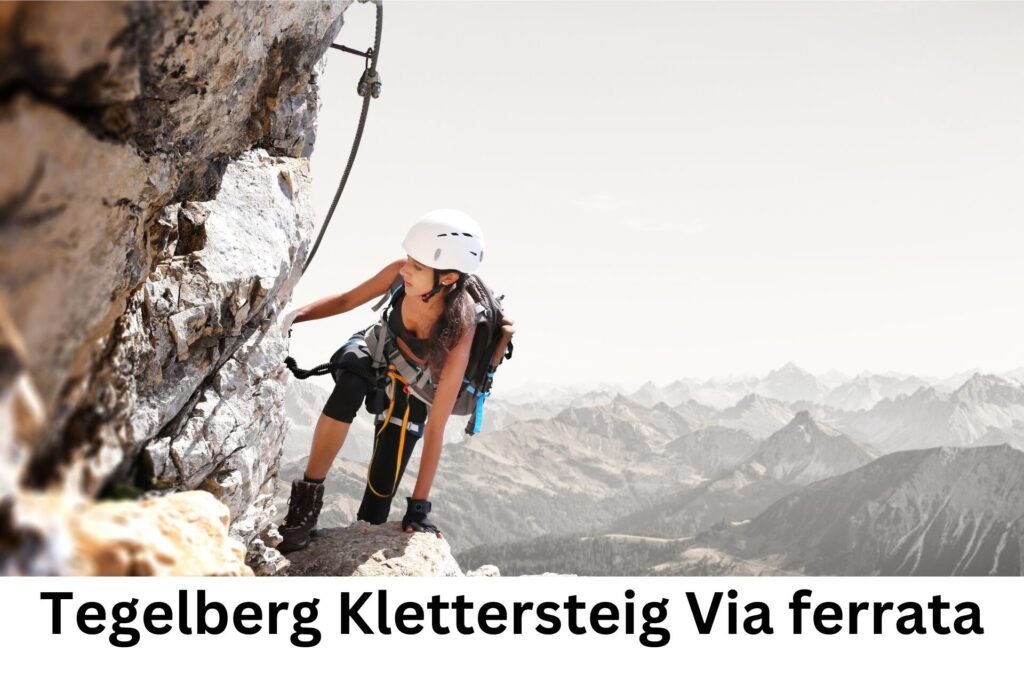Do you dare attempt the Tegelberg Klettersteig Via Ferrata? Germany’s most iconic route.
Introduction
Germany is home the Tegelberg Klettersteig Via Ferrata, one of the most breathtaking via ferrata routes in the Alps. Located near the famous Neuschwanstein Castle in Bavaria, this challenging via ferrata offers climbers an exciting experience with dramatic rock faces, steep ascents, and panoramic views of the surrounding mountains and lakes.
This guide will take you through everything you need to know about Tegelberg Klettersteig, including its route details, difficulty level, safety tips, and the best times to visit.
Click here for another incredible Via Ferrata in Germany

Overview of the Tegelberg Klettersteig
- Location: Tegelberg, Ammergau Alps, Bavaria, Germany
- Difficulty Level: Very Difficult (C/D)
- Elevation Gain: ~850m
- Total Length: ~1.2 km
- Best Season: June to October
- Required Equipment: Helmet, harness, via ferrata lanyard with energy absorber, gloves, sturdy hiking boots
- Access: Free (Tegelberg Cable Car ticket recommended for descent)
Getting to Tegelberg Klettersteig
Tegelberg is located near Füssen, a small Bavarian town famous for its fairy-tale castles and alpine scenery. Getting there is straightforward.
By Car:
- From Munich, take the A96 highway towards Füssen.
- Continue on B17 towards Schwangau, following signs for Tegelbergbahn (Tegelberg Cable Car).
- Park at the Tegelberg cable car station, where the trailhead begins.
By Public Transport:
- Take a train from Munich to Füssen (about 2 hours).
- From Füssen, take a local bus (line 73 or 78) to Tegelberg Talstation.
- The trailhead starts from the parking area near the cable car station.
Click for a super selection of European adventures.
The Route & Difficulty Level
The Tegelberg Klettersteig is known for its steep, exposed climbs, requiring good fitness, climbing skills, and a head for heights. It is a demanding via ferrata best suited for experienced climbers.
1. Approach to the Via Ferrata
- Distance: ~1.5 km
- Time: ~1–1.5 hours
- Elevation Gain: 400m
The hike to the via ferrata entrance begins at the Tegelbergbahn parking lot. Follow the signs towards the via ferrata entrance, passing through dense forests and rocky paths. The final stretch includes steep terrain leading to the starting point of the via ferrata.
2. The Via Ferrata Climb
- Distance: ~1.2 km
- Time: ~3–4 hours
- Difficulty: C/D (Difficult to Very Difficult)
The climb features a mix of vertical rock faces, narrow ledges, exposed traverses, and some overhangs. Key sections include:
- Steep Start: Right from the beginning, you face an almost vertical climb with a steel cable for protection.
- Exposed Traverse: A horizontal traverse with breathtaking views over Schwangau and Neuschwanstein Castle.
- Ladders & Rungs: Several iron ladders and rungs assist in the steeper sections.
- Crux Section (D difficulty): A challenging overhanging part that requires upper-body strength and precise footwork.
- Final Climb: The last section is exposed but less difficult, leading to the summit ridge.
Safety & Preparation Tips
- Experience Required: This via ferrata is not for beginners due to its exposure and difficult sections.
- Weather Awareness: Always check the weather forecast before climbing. Avoid in rainy or stormy conditions.
- Proper Gear: Use a certified via ferrata set, gloves, and sturdy hiking boots.
- Start Early: To avoid crowds and ensure you have enough daylight for the climb.
- Hydration & Nutrition: Carry enough water and energy snacks since there are no refill stations on the route.
- Physical Fitness: Good upper-body strength and endurance are necessary for this climb.
Best Time to Visit
The best season for climbing Tegelberg Klettersteig is June to October when the weather is stable, and the route is free of snow. Avoid early spring and late autumn, as ice and snow can make the climb dangerous.
Why Tegelberg Klettersteig is Special
- Close to Neuschwanstein Castle: Enjoy breathtaking aerial views of the famous fairy-tale castle.
- Diverse Climbing Sections: A mix of vertical climbs, ledges, traverses, and overhangs.
- Spectacular Summit Views: Unparalleled panoramas of the Bavarian Alps and lakes.
- Challenging and Rewarding: A true test of skill for via ferrata enthusiasts.
Nearby Attractions & Activities
After completing the Tegelberg Klettersteig, consider exploring these attractions:
- Neuschwanstein Castle: One of the most famous castles in the world, just a short drive away.
- Hohenschwangau Castle: A historic castle with beautiful gardens.
- Alpsee Lake: A picturesque lake ideal for a relaxing walk or boat ride.
- Tegelberg Summer Toboggan Run: A fun alpine slide experience at the cable car station.
- Füssen Old Town: A charming Bavarian town with traditional architecture, restaurants, and shops.
For a range of stylish, practical and affordable menswear suitable for the outdoors visit https://www.braveandboldmenswear.com/
Conclusion
The Tegelberg Klettersteig is one of the most exciting and challenging via ferrata routes in Germany. With its steep cliffs, exposed traverses, and breathtaking alpine views, it offers an unforgettable adventure for experienced climbers. If you are looking for an adrenaline-pumping climb near one of Germany’s most iconic castles, Tegelberg Klettersteig is a must-visit!
Whether you’re an experienced via ferrata climber or a passionate mountaineer seeking a thrilling challenge, this route will leave you with lasting memories and stunning panoramic views. Pack your gear, plan your trip, and get ready for an incredible climb!
